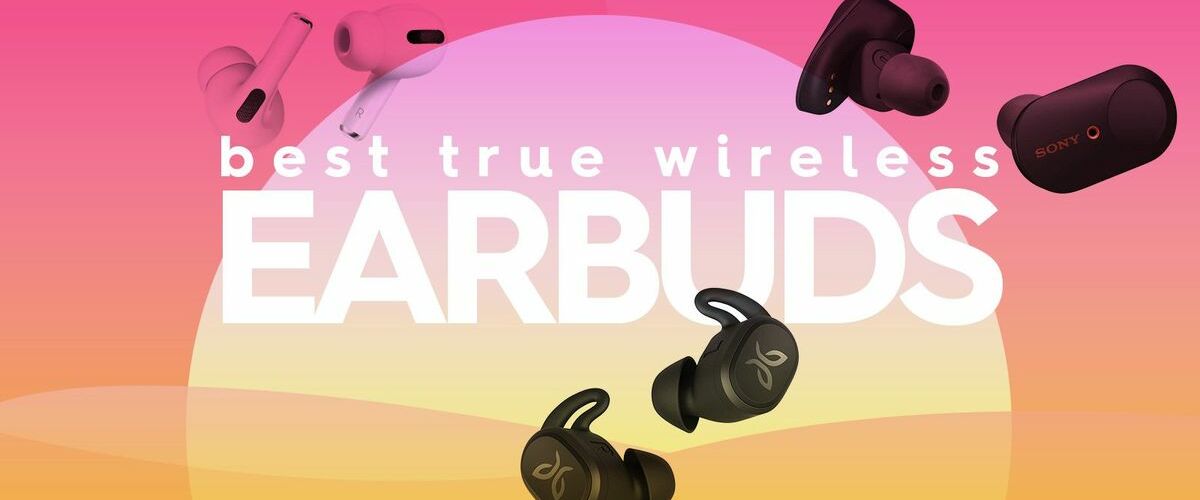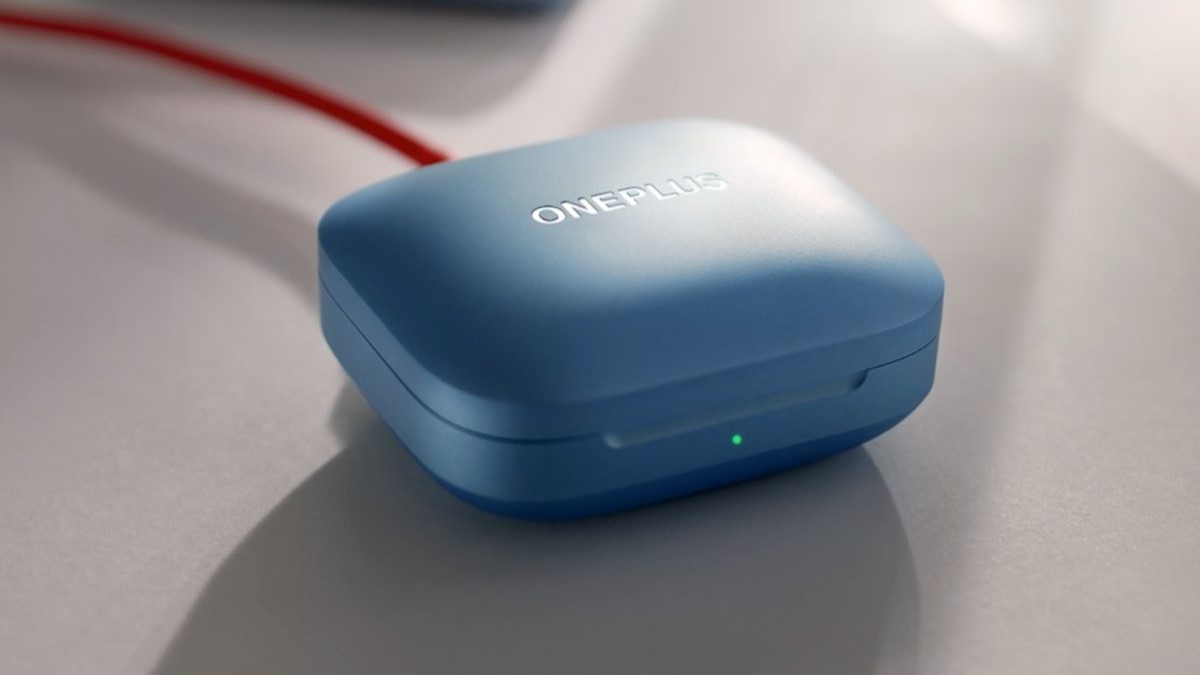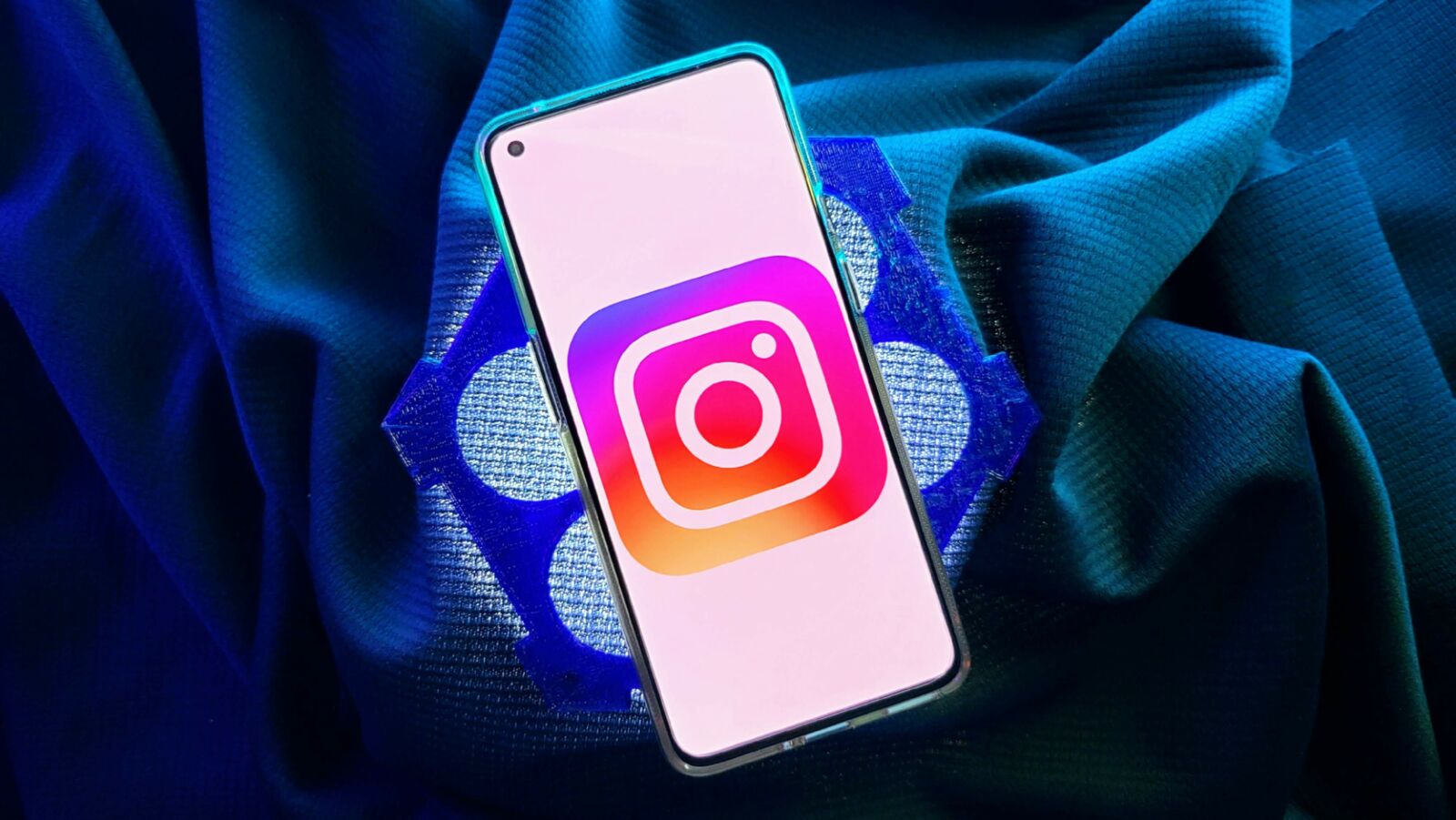Whether you’re going for a jog or calling into a work meeting, owning a pair of the best wireless earbuds is quite useful in this day and age. Luckily, if you own an Android phone, there are plenty of great options to choose from, from feature-packed buds with all-day comfort to budget picks that’ll set you back $100 or less.
We’ve tested and reviewed dozens of different wireless earbuds over the years, so you can find the pair that’ll work best for you. While you’re checking out the list, ask yourself what you’re looking for in a pair of earbuds. Will you mostly be using these buds for phone calls? Listening to music? There are plenty of great options in every category, you just need to know where to look.
The Jabra Elite 10 currently lead the pack, thanks to a sophisticated balance of premium specs and bang for the buck, but they’re not the only great option. Not sure if earbuds are right for you? Take a look at our guide to the best wireless headphones while you’re in the neighborhood.
For 20+ years, Ted Kritsonis has been spending a lot of time testing out gadgets to help others make the best decision with their hard-earned money. When it comes down to audio devices, Ted’s picks come from countless hours of listening for all the nuances that matter.
At a glance
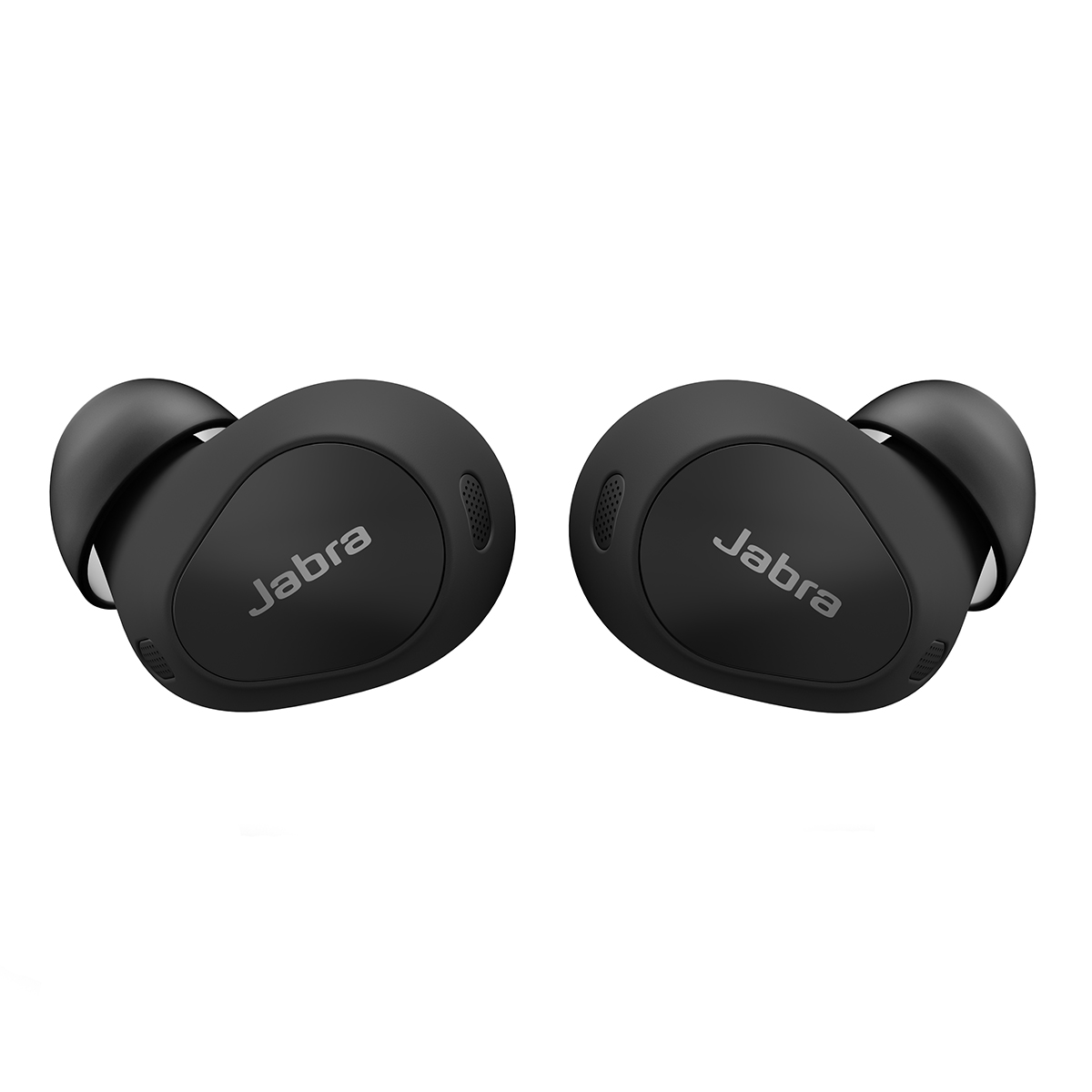 Best overall
Best overall
Best overall
The Jabra Elite 10 strike the perfect balance between premium features and value for the money, thanks to great sound quality, ANC, and all-day comfort.
Read more below.
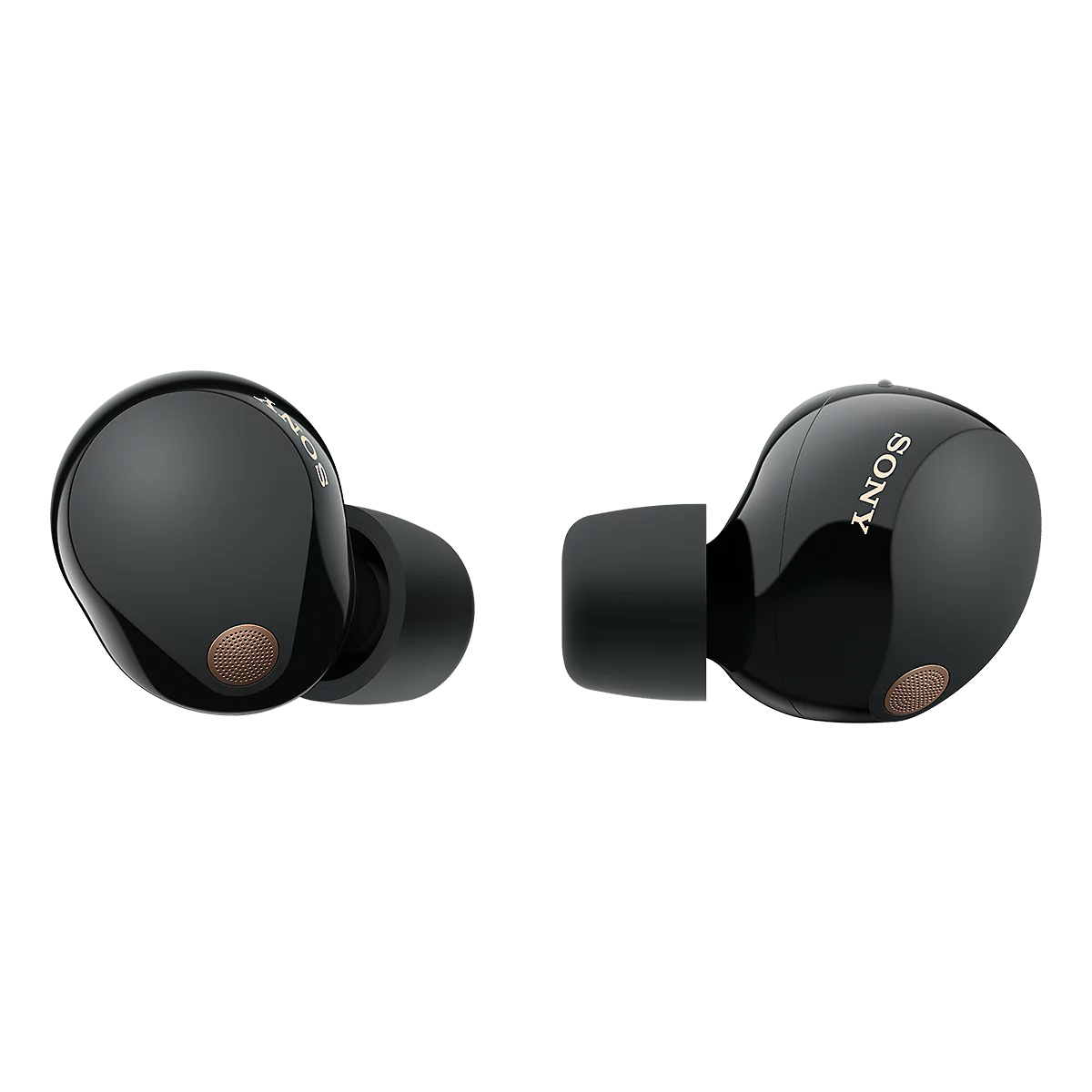 Best upgrade pick
Best upgrade pick
Best upgrade pick
Backed by a world-class brand, the Sony WF-1000XM5 come with excellent sound quality, loads of battery life, and a wireless charging case.
Read more below.
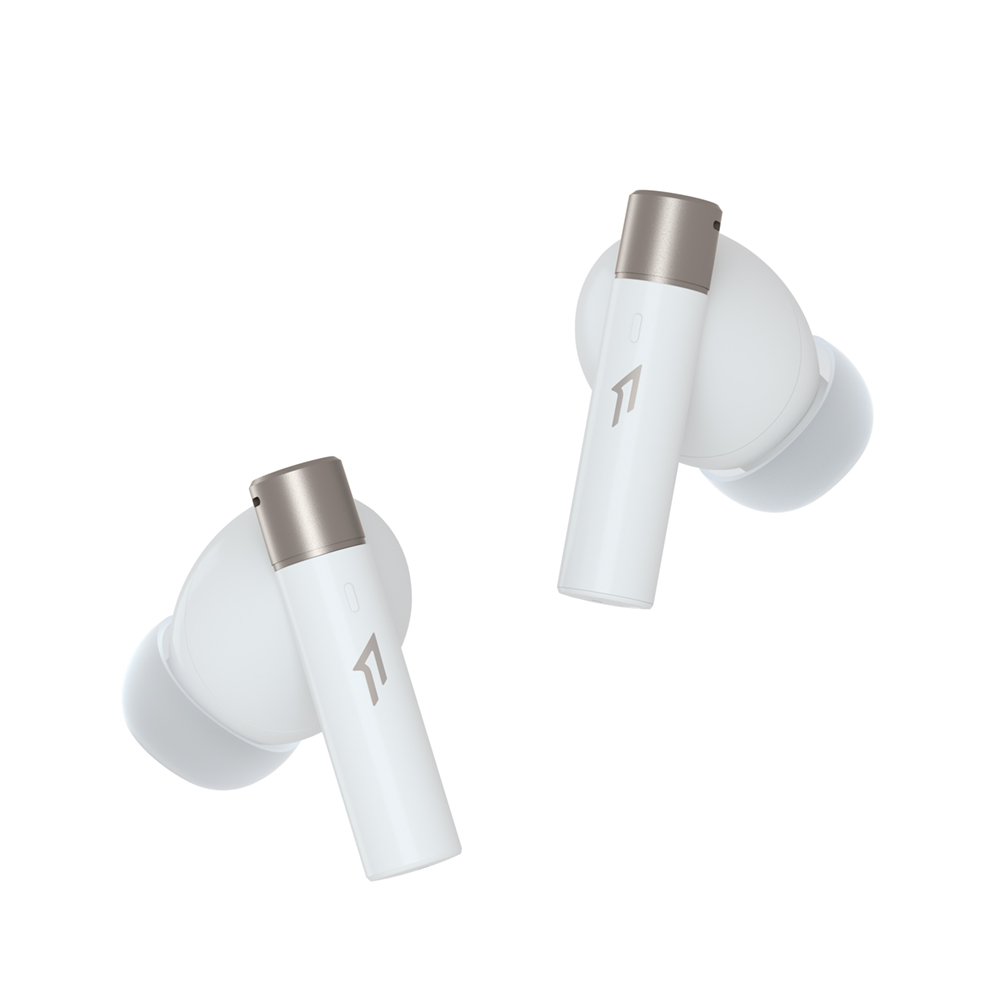 Best budget pick
Best budget pick
Best budget pick
The 1More PistonBuds Pro Q30 take an AirPods-style approach, only deliver excellent sound quality, adaptive ANC, and solid app support for a fraction of the price.
Read more below.
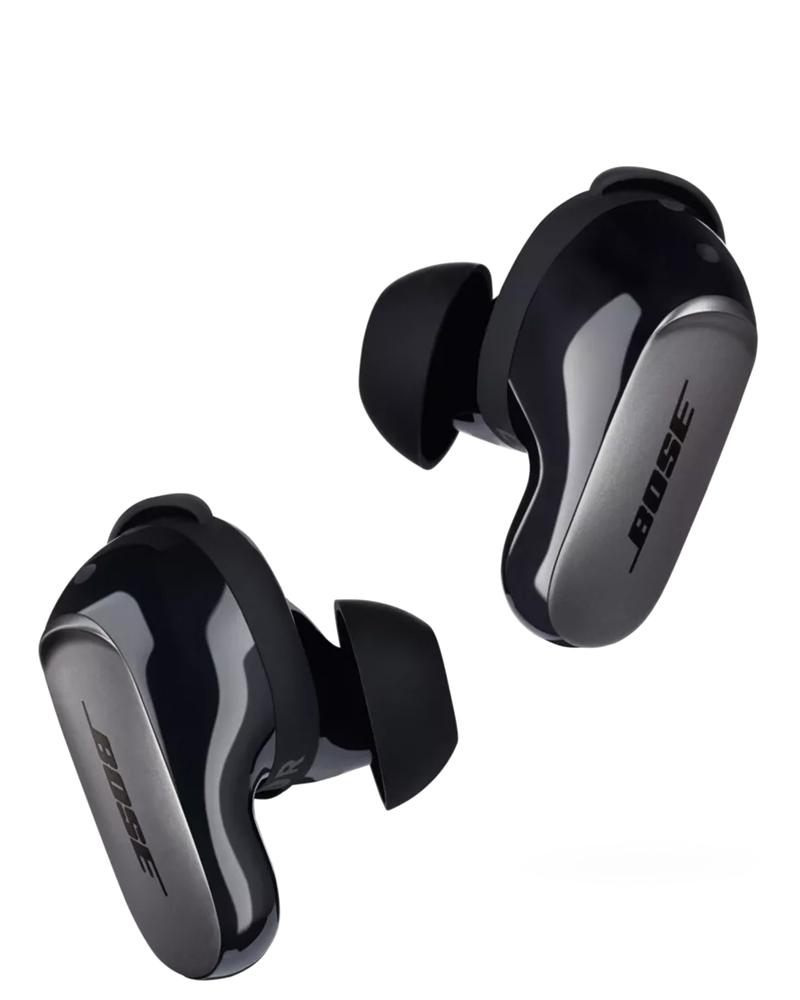 Best ANC
Best ANC
Best for noise cancellation
Great-sounding and feature-packed, the QuietComfort Ultra Earbuds give you the ability to personalize noise cancellation settings and adjust the EQ to match your style.
Read more below.
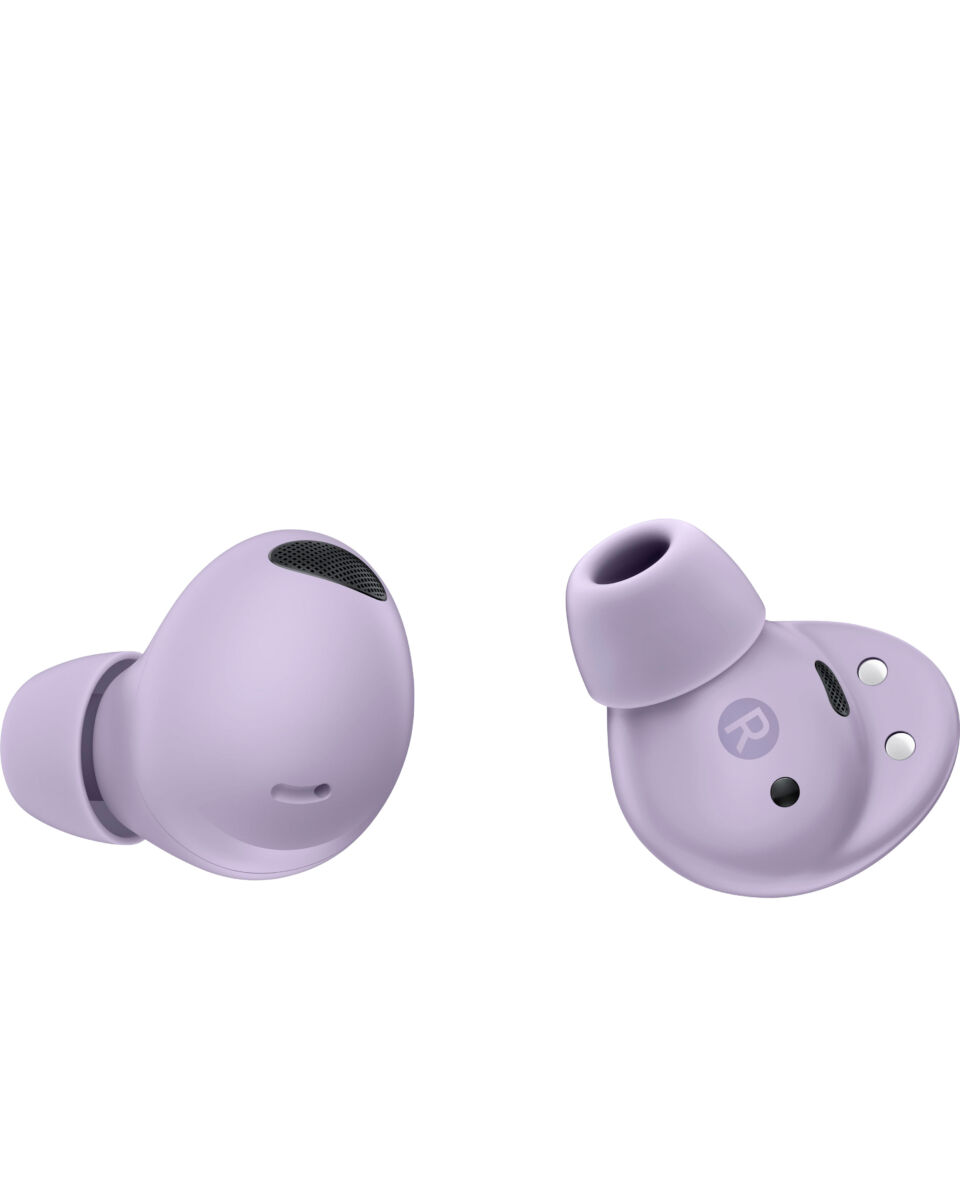 Best for Samsung users
Best for Samsung users
Best for Samsung users
Pairing all-day comfort with outstanding sound quality, the Galaxy Buds 2 Pro are the best choice if you’re already immersed in the Samsung ecosystem.
Read more below.
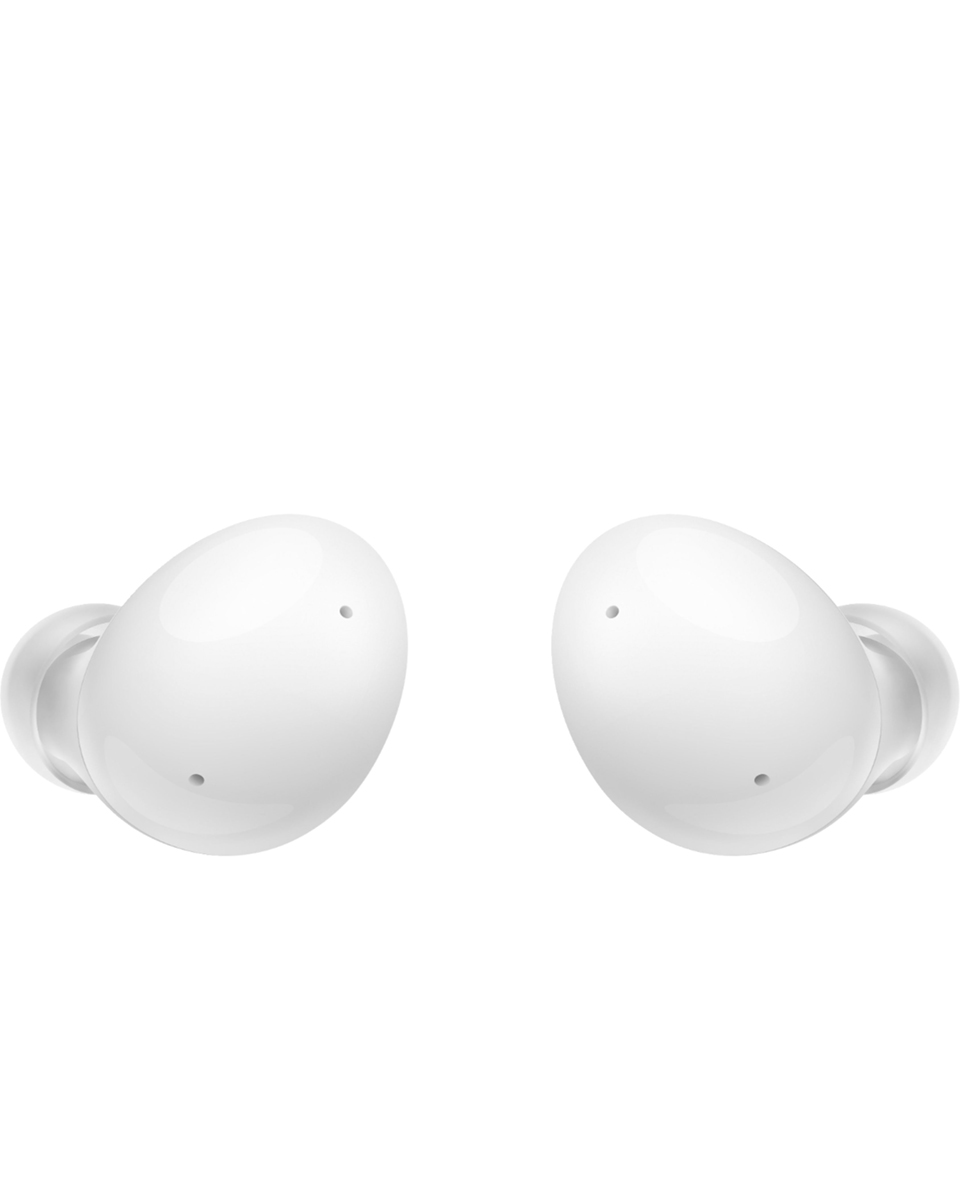 Best for comfort
Best for comfort
Best for comfort
If you want a quality pair of earbuds for less than $100, look no further than the Galaxy Buds 2. These earbuds boast intelligent ANC, impressive audio codecs, and all-day comfort.
Read more below.
Load the next 3 products ↓
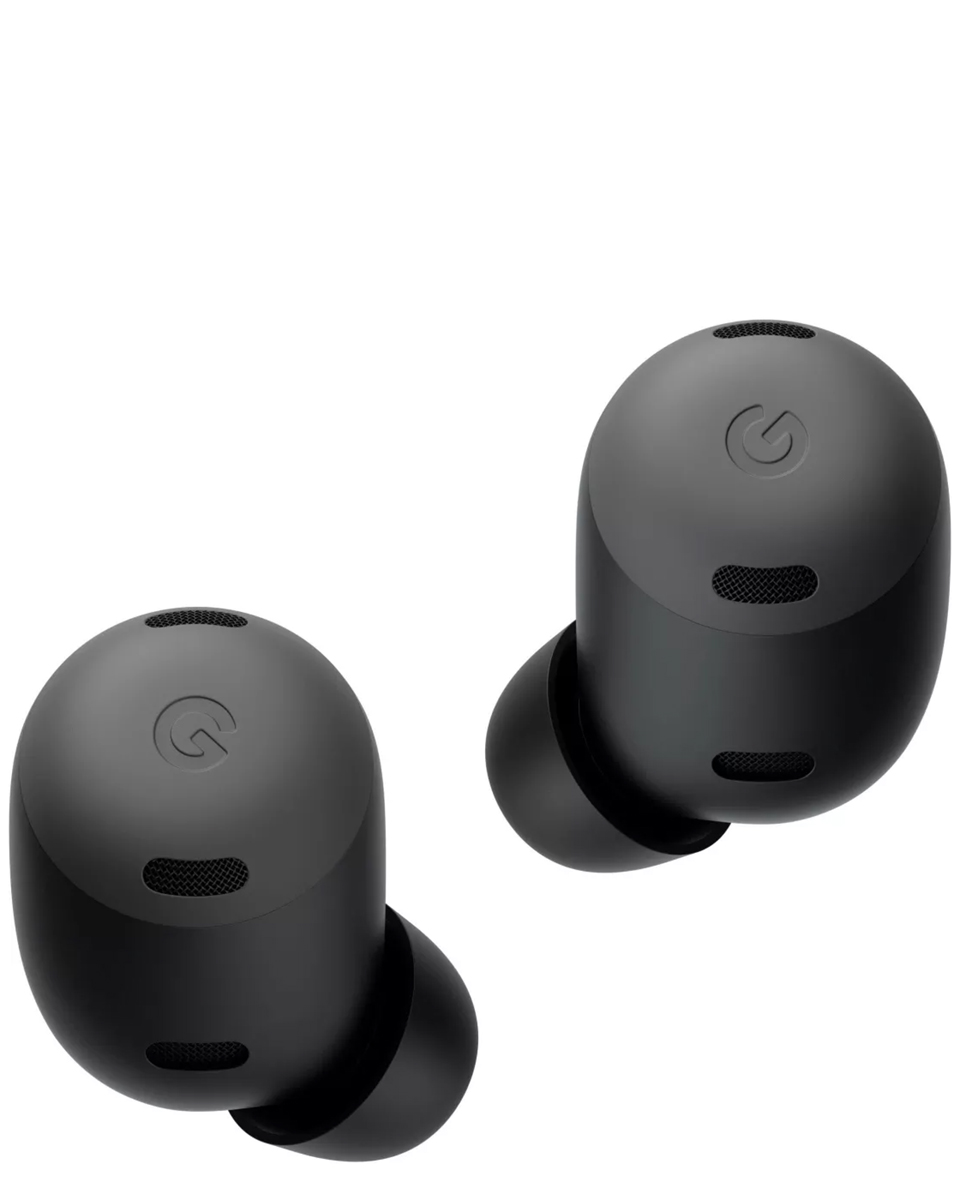 For Pixel users
For Pixel users
Best for Pixel users
If you’re the owner of a Pixel phone, you can’t beat the Google Pixel Buds Pro when it comes to solid sound quality, wireless charging, and device integration.
Read more below.
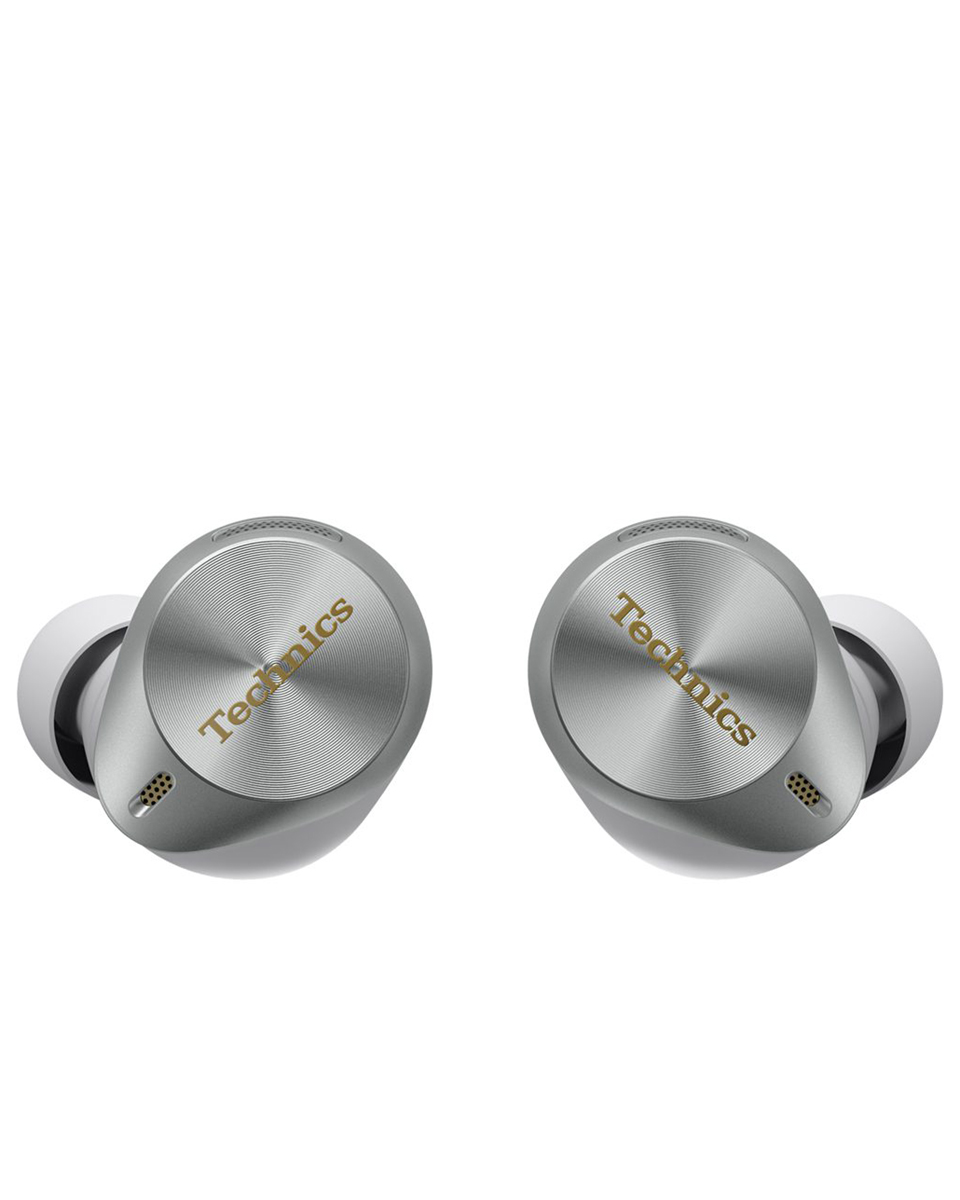 Best for hi-res
Best for hi-res
Best for hi-res
With LDAC support, plus default sound that gets things off to a good sonic start, the Technics EAH-AZ80 are an excellent combination of fit, comfort, sound, and customization.
Read more below.
 Best value
Best value
Best value
The OnePlus Buds 3 offer serious value every time you use them because of their great sound and personalization features that are easy to set up.
Read more below.
Best overall
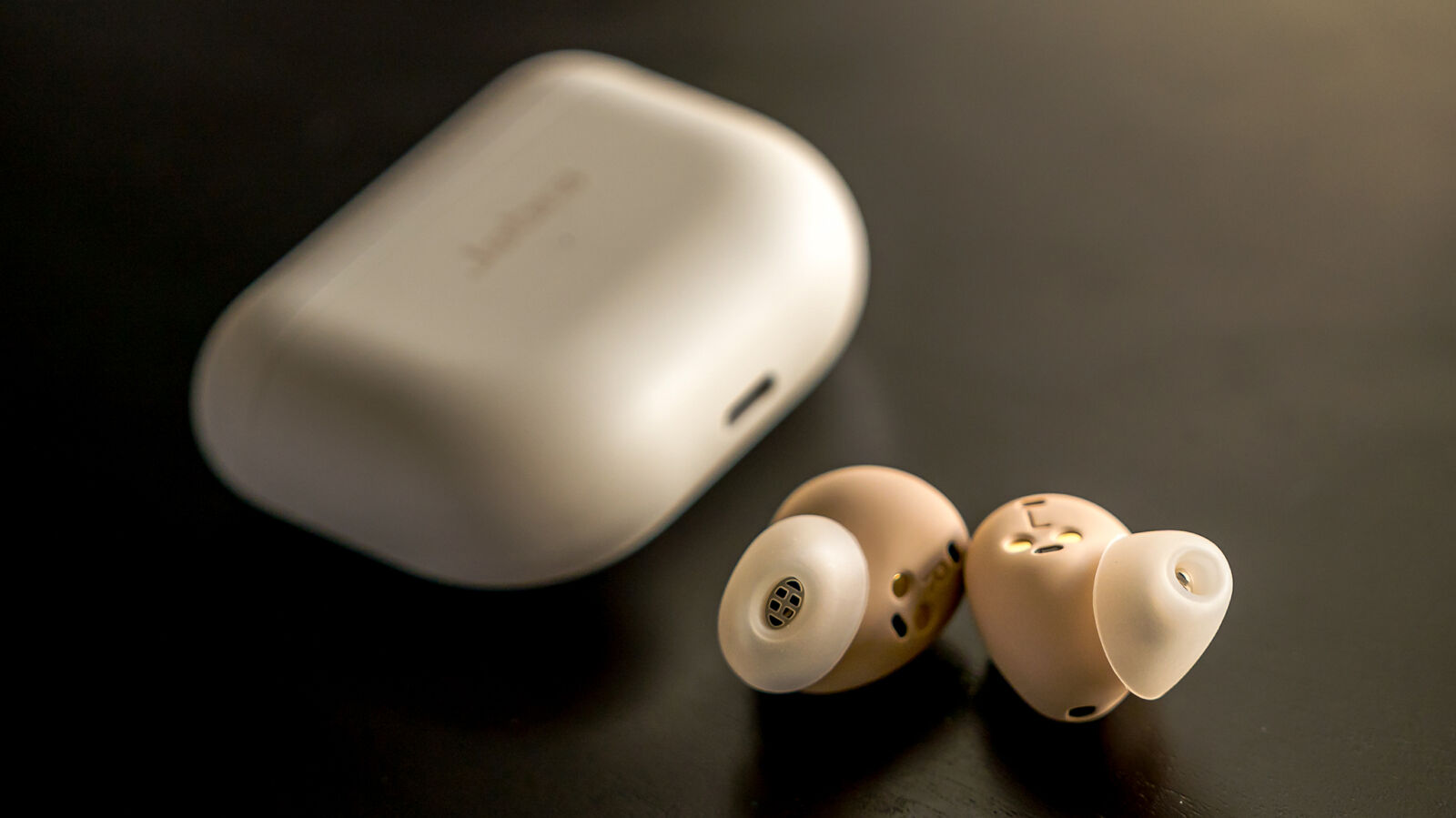
Previous Jabra earbuds set the stage for what the Elite 10 bring to the table as one of the best wireless earbuds worth the money. We certainly noticed that in our review of the Elite 10. Jabra’s experience as a hearing aid company shows a consistent ability to find balance in how it approaches both comfort and sound. These earbuds feature a nicely balanced sound signature that you can easily adjust in the excellent Sound+ app available for Android and iOS. The Elite 10 veer away from the familiar design traits of the previous Elite 7 Pro and Elite 8 Active, creating a more open-fit build that won’t be uncomfortable, no matter how long you wear them.
You can expect the same balanced sound signature, which you can tweak how you like in the Sound+ app. Jabra also brings in spatial audio for a virtual surround sound effect that works with any content. With great ANC, you can escape into the audio content, and the noise cancelation adapts automatically based on the ambient sounds around you. As for battery life, you get up to eight hours per charge with ANC on. You can stretch that further if you leave it off. The included case nets three additional charges for an overall total of around 30 hours. The case itself charges via USB-C or Qi wireless charging, including a fast-charging option where plugging in for five minutes can get you up to 60 minutes of playback.
Best upgrade pick
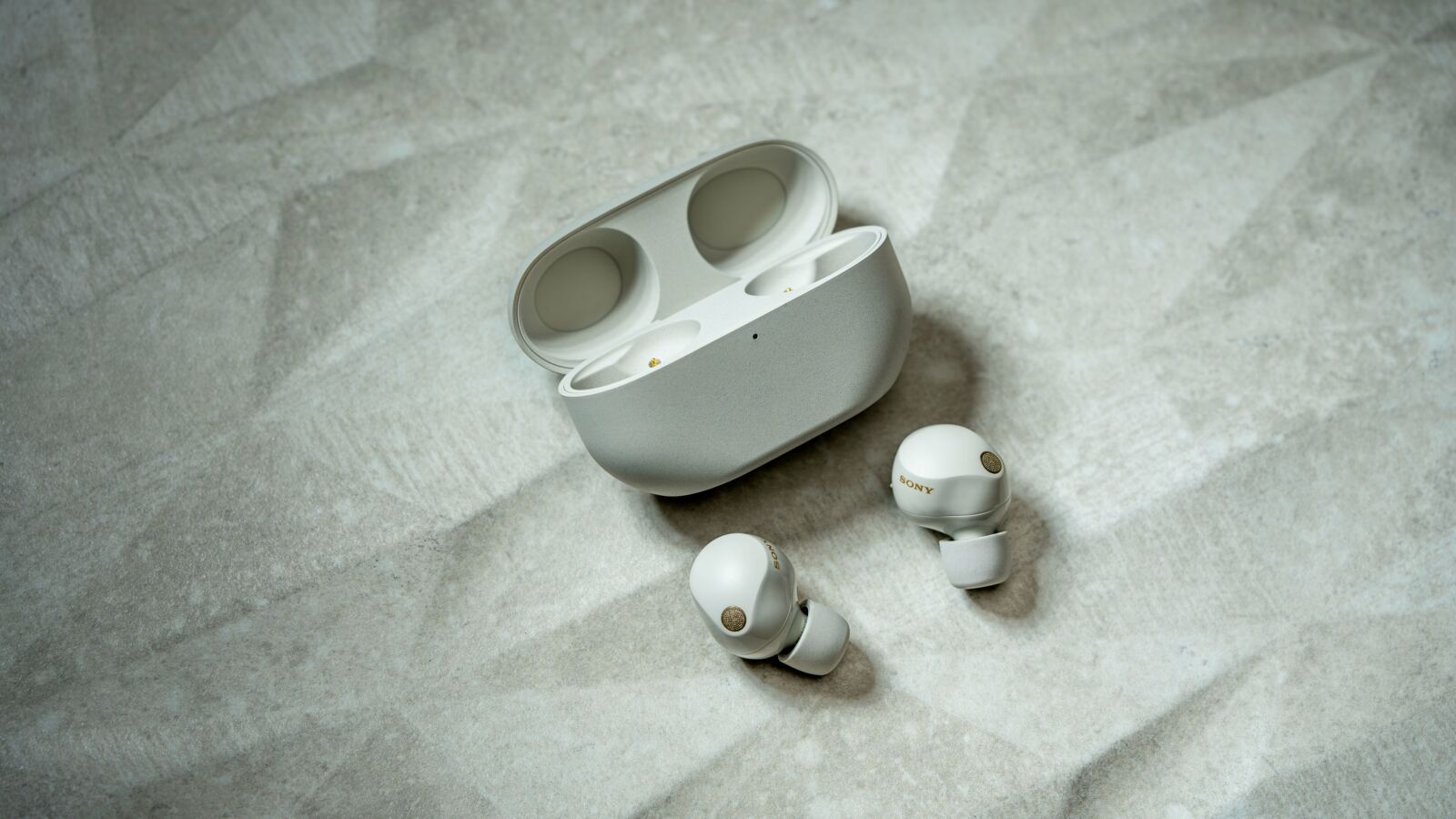
At this point, ANC has become a standard feature in wireless earbuds, and we found the WF-1000XM5 are world-class by comparison in our review. That was already the case with the previous Sony WF-1000XM4, with the XM5 taking it even further to set the tone for everyone else.
Sony didn’t have to play too much with the existing sound profile, choosing not to skew the default soundstage to push more bass. Instead, you get something more neutral to start off, leaving you plenty of room to customize it through the equalizer settings in the Headphones Connect app. Battery life is excellent as well, with up to eight hours alone (with ANC on) and an additional 24 hours with their charging case.
Sony continues to shave the earbuds and case down, and adding foam tips does wonders for passive noise isolation. Even with that, the WF-1000XM5 have an ambient sound mode that also performs well. And then there’s 360 Reality Audio for listening to content with a spatial effect.
Best budget pick
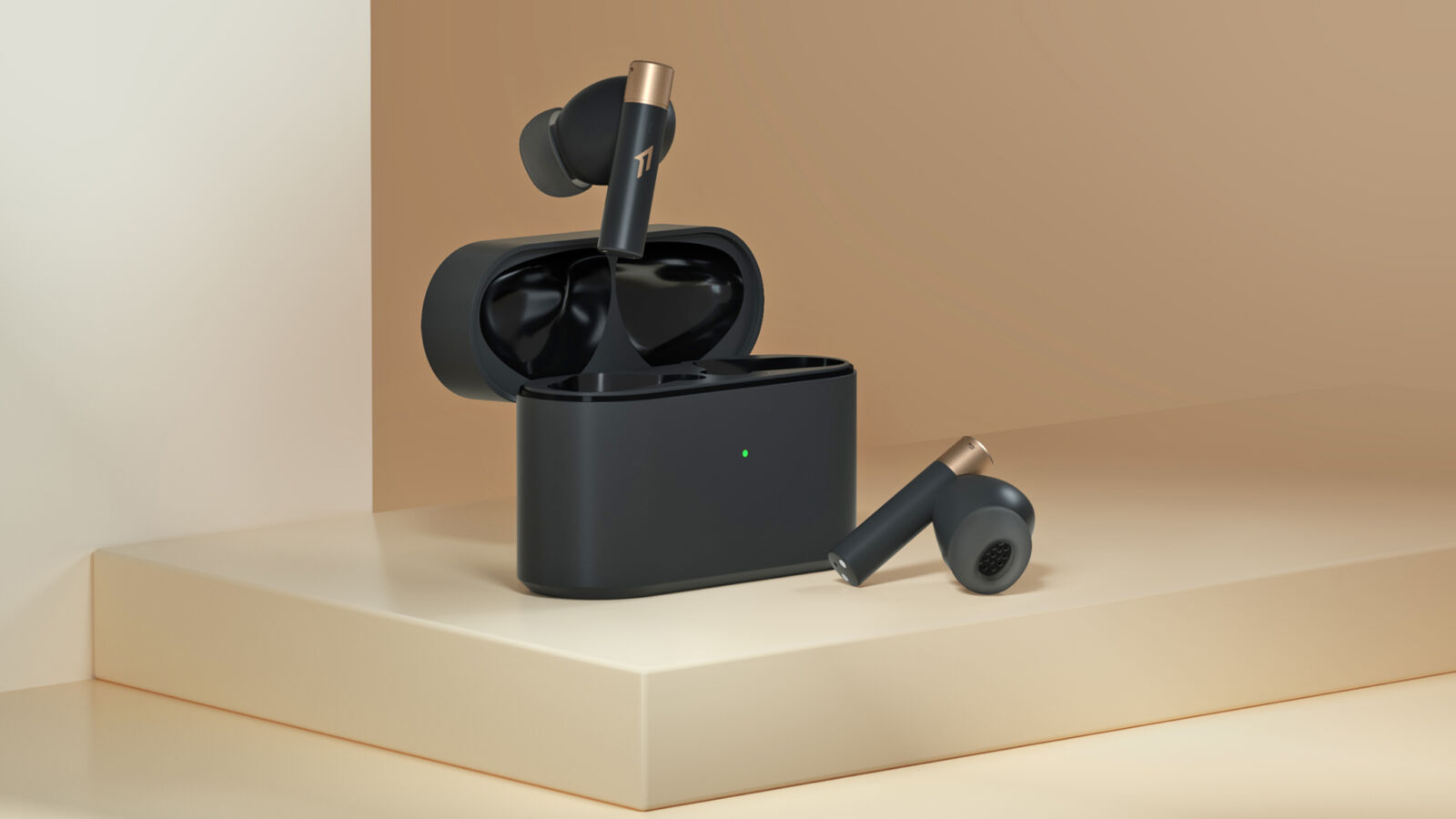
1More makes earbuds at various price points, most of them undercutting competitors in the same ballpark. The PistonBuds Pro Q30 are no different, coming in way below what similar pairs generally sell for, which is great news for your wallet.
The value proposition here is that you get the same solid audio quality 1More often brings to anyone’s ears, including excellent app support with an equalizer full of presets and custom adjustments. The stem design here is highly reminiscent of the AirPods Pro, though they’re not going to be in the same league as far as noise cancelation goes, but they’re a big upgrade over the regular AirPods in spite of the price difference.
Spatial audio is a nice addition, even if it sometimes underwhelms, whereas the gaming mode is a nice touch if you tend to use your phone, tablet, or computer to play. Battery life is a mixed bag, given the earbuds will last up to five hours with ANC on, moving up to 7.5 hours if you leave it off. Higher volume levels will draw those numbers down further. The case gives you an extra three charges, though you lose out on wireless charging as a convenience.
Best for noise cancellation
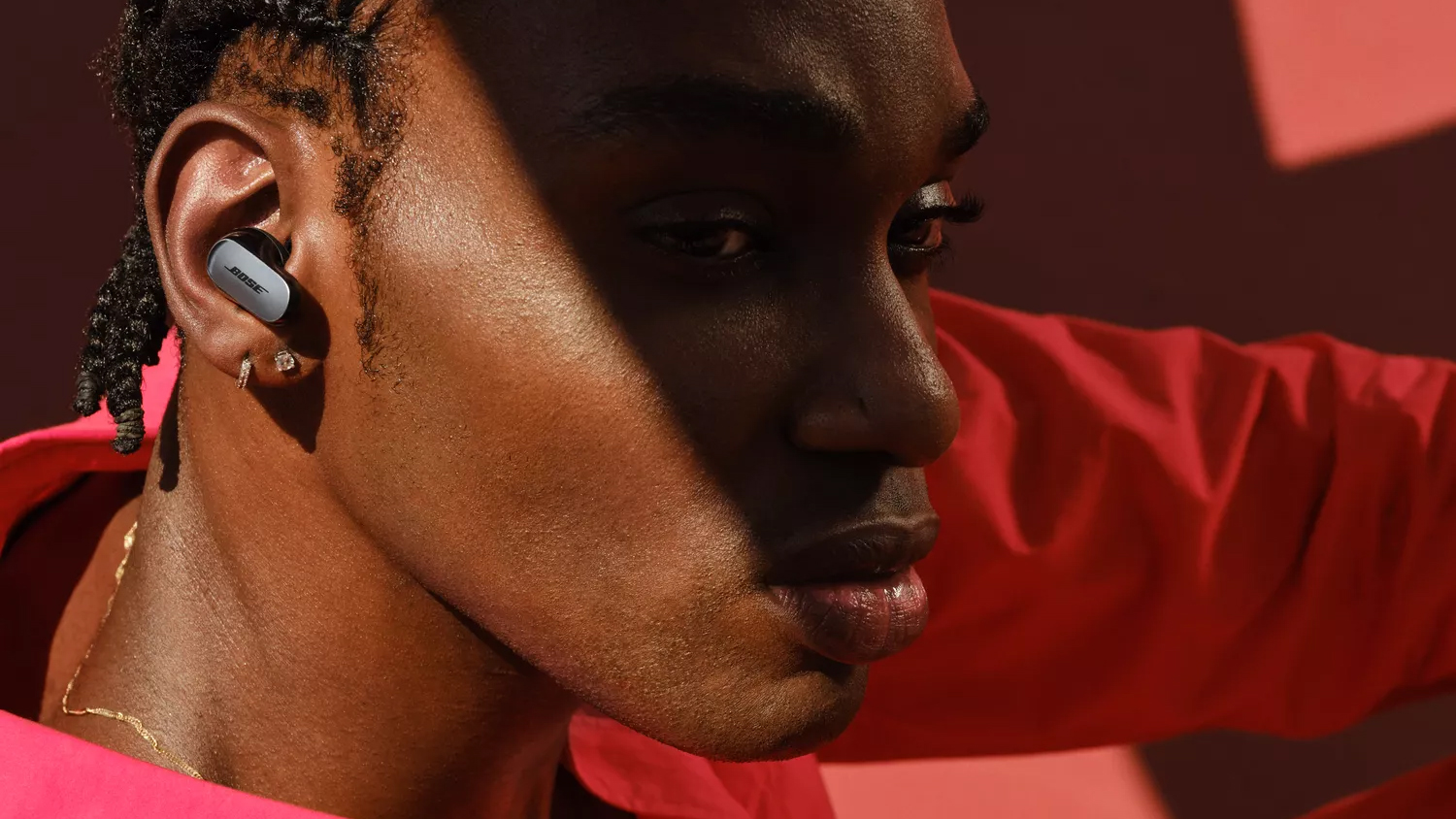
We described the Bose QuietComfort Earbuds II as an elite pair of earbuds when it comes to proper ANC, and the QuietComfort Ultra Earbuds take things to another level.
Bose also chose to make some positive changes to the sound profile, maintaining the same neutral sound profile, only this time adding more features in the Bose app to tweak them. Not only that, but adding aptX Adaptive support brings in the kind of hi-res audio support that’s been sorely lacking with the company’s earbuds. Battery life is decent, though it varies with volume. You’re more likely to get just above five hours and an additional 18 hours with the charging case. For some reason, the larger case doesn’t offer wireless charging.
Without question, these will produce some of the best noise cancelation you’ll find on any pair of earbuds where there are 11 different modes to work with. The ambient sound mode allows you to hear the outside world, removing the need to take off your earbuds if you’d like to hear what’s going on around you.
Best for Samsung users
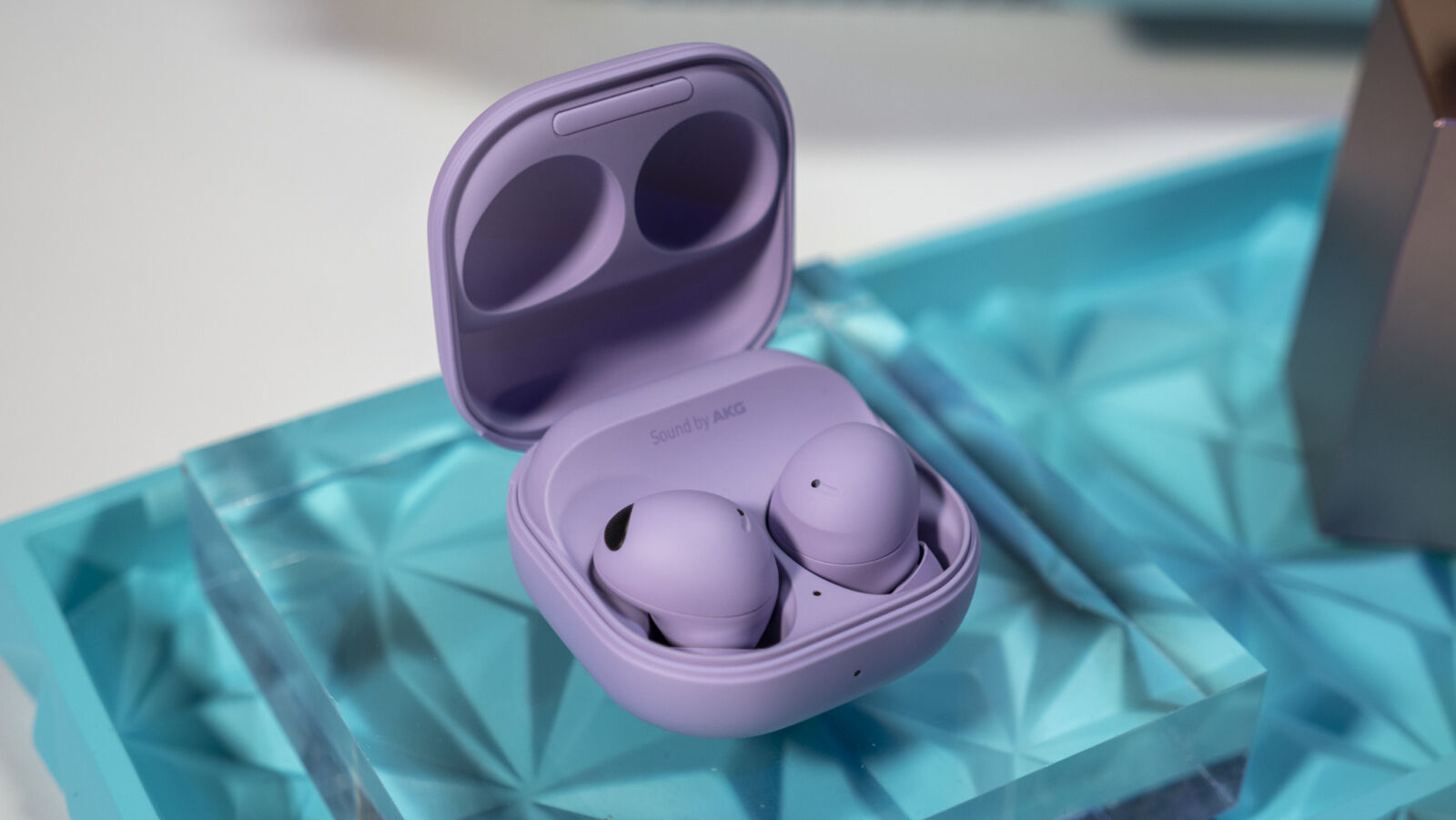
In our review of the Samsung Galaxy Buds 2 Pro, we found that the wireless earbuds took the best features from the previous Galaxy Buds Pro, making them stand out as one of the most comfortable we’ve tested. It’s a distinction the company wanted from the start, yet it took several attempts to get to this level of respectability.
The Buds 2 Pro are also small and nimble, packing in active noise cancelation (ANC) and crisp sound all at once. The ANC is smarter and more precise this time around, muffling a wider range of frequencies. Call quality also remains excellent, with some improved clarity to go with it. They are also Samsung’s first earbuds to support 24-bit hi-res audio in case you want to listen to another level in quality. The Enhanced 360 feature is a renewed focus on spatial audio, including head tracking, to give your ears a surround sound effect.
All of this comes at the expense of battery life, where you max out at up to five hours per charge when ANC is on — eight hours if you keep ANC off. The case gets you three extra charges, which you can charge via USB-C or wireless charging pads. A quick five-minute charge through USB can get you up to an hour of playback.
Best for comfort

Perfecting an elegant combination of comfort, performance, and value, the Samsung Galaxy Buds 2 are a great choice if you want the premium earbuds experience without paying the premium cost.
The sound profile is clear and crisp, and bringing in ANC is excellent because it pushes the Galaxy Buds 2 closer in feel and quality to the Galaxy Buds Pro. The latter does block out slightly more background noise, but our Galaxy Buds 2 review found it to be a surprisingly even race between the two. The onboard mics do okay with Ambient Sound, though the ones on the Buds Pro generally perform much better. That’s also why phone calls on the Buds 2 are much better in quieter surroundings.
Battery life isn’t as high as previous pairs, but you can still expect up to 7.5 hours with ANC off or five hours with it on, depending on volume levels. You get three extra charges from the case, topping it up via USB-C or wireless charging.
Best for Pixel users

When we tested and reviewed the Pixel Buds Pro, we found that Google finally had something special to offer in the arena of wireless earbuds. New tuning gives these buds a clearer sound that skews more favorably to the mids and highs. There are also seven audio presets, and you can create your own via a five-band EQ.
As with previous generations, the Pixel Buds Pro are tailor-made for Android. Open the case the first time, and with one tap, your Pixel Buds will pair with most modern Android phones. Unless you’re using a Pixel device, where the settings are within the phone’s system settings, you can download the companion app during setup on other Android handsets to access some of the extras available. Finally, that includes ANC, and it couldn’t come soon enough, given how good it is on these earbuds. They do a solid job blocking out background noise and putting Google on the map for such a key feature.
The touch controls are reliable, and the translation features are also very much intact, which is a cool way to bridge a language barrier when you can.
Best for hi-res
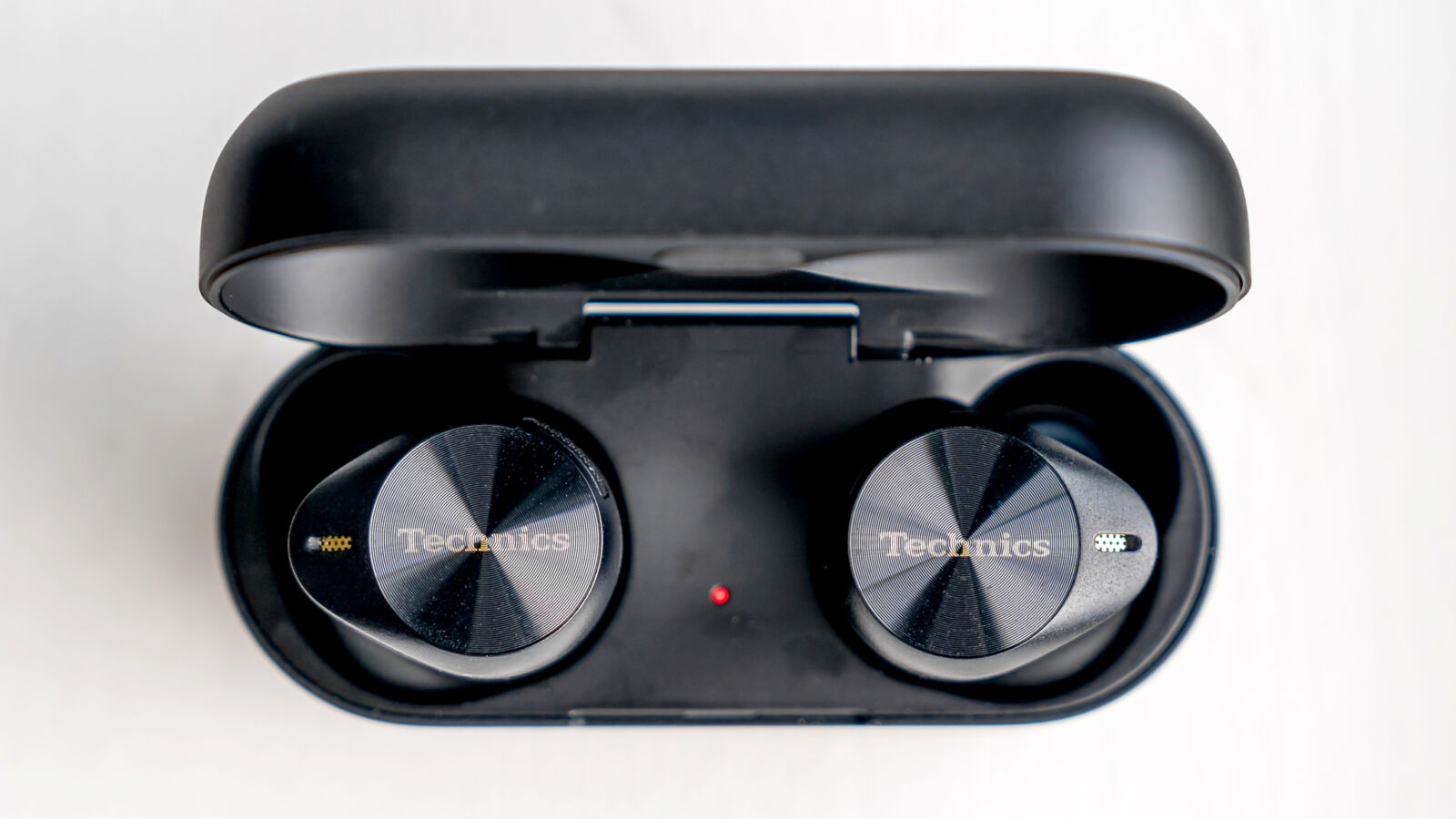
Technics may not be the household name others on this list usually are, but in our review of the EAH-AZ80, we found these earbuds to be an excellent pair for their audio quality alone.
As far as hi-res audio goes, the EAH-AZ80 support LDAC, so when you listen to content from sources offering higher resolution, you should hear the difference when putting these buds in your ears. Plus, the solid app support also gives you a 5-band EQ with six presets and the option to create your own. The earbuds also offer multipoint connections with three devices at the same time, though the LDAC codec can interfere with simultaneous connections. The app offers a variety of custom choices, including whether you want Alexa as your voice assistant or how you want the onboard controls to work.
You won’t get ANC on the same level of other earbuds at the same price, so you have to accept that trade-off to get the sonic balance available here. You can expect pretty good battery life at up to seven hours per charge with ANC on or nine hours if you leave it off, give or take how loud you get.
Best value
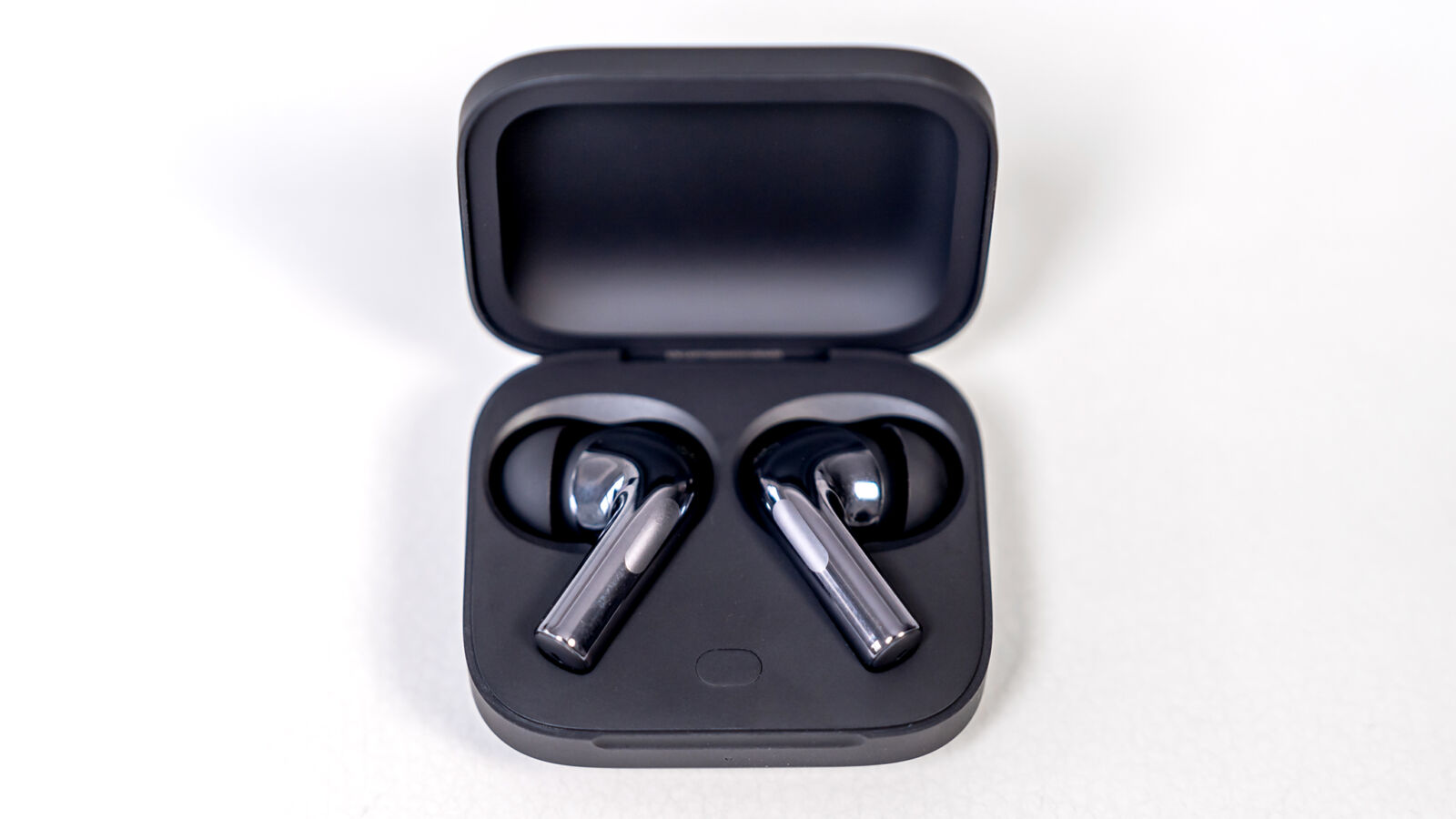
In our review of the OnePlus Buds 3, the earbuds proved their worth in more ways than one, presenting serious value for what they cost. A high level of personalized features drive that, including a hearing test to tailor sound to your ears, along with an equalizer and bass slider to adjust the sound to your own preferences. Use a device that supports the LHDC Bluetooth codec and you can listen to hi-res audio tunes as well. Thankfully, the Buds 3 fit comfortably, which also helps the solid ANC block out a lot of the background. If you’re into gaming, Game mode helps knock down latency when playing games. The one weak link in the mix may be spatial audio, though you can always try and see if you like it.
Multipoint support is great to have in any pair of affordable earbuds, and you can connect the Buds 3 to two devices simultaneously. Just too bad there are no wear sensors to automatically pause playback once you remove either earbud. The stem controls are usually responsive, but also finicky at times, making them a little inconsistent that way.
Battery life holds up pretty well at up to seven hours with ANC turned on if you’re not also listening to hi-res audio. These earbuds play louder than most at their default volume, so you won’t have to crank it up and lose battery in the meantime. You get an extra three charges from the case. In a pinch, a quick 10-minute charge gives you seven hours of playback. The one thing you lose out on is wireless charging.
- Back to the top ^
FAQ
What are the #1 wireless earbuds?
Why you can trust Android Central
Our expert reviewers spend hours testing and comparing products and services so you can choose the best for you. Find out more about how we test.
Like any pair of headphones, which earbuds or wireless headphones are fitting for you is subjective in a few key ways. They have to fit right, feel comfortable over more extended periods, and produce a pleasing sound to your ears. If audio fidelity is paramount for you, there are good options for that, just as there are options for active users or options that present great value without breaking the bank.
The best wireless earbuds strike the right notes where it counts. We’re talking about excellent sound quality, excellent comfort, solid microphones, and accessibility — even better when they come at a reasonable price. It’s also not just about sound; it can also be about what you don’t hear, as active noise cancelation (ANC) becomes such an integral part of what makes good earbuds stand out. That’s why it should come as no surprise that such a feature is so common among the best in the business.
For many, the Jabra Elite 10 will be the best option. They strike the right balance in the areas that really matter, like size, sound, durability, and supporting features. They’re small enough to fit comfortably in most ears and are rugged enough to withstand water and sweat should you need extra protection. Sound quality is superb, call quality is solid, and the Sound+ app has features worth trying.
Equipped with good ANC, plus unique features to cater to call quality, there’s a lot to work with. They provide excellent passive isolation with the proper seal to listen to everything without worrying about the background. You also have physical control buttons that avoid false positives when you press them.
Jabra scored a real winner with these among the best wireless earbuds. They may not come in first place in every category, but it’s hard to argue how consistently great they are to use.
How do true wireless earbuds differ from regular wireless earbuds?
In simple terms, true wireless earbuds function without cables and cords. Regular wireless earbuds are “wireless” because they don’t connect to the device playing the audio but do have a cable connecting the two earbuds. In that case, the Bluetooth connection from a smartphone connects to one earbud, which then relays that connection to the other earbud through the cable.
True wireless earbuds perform the same function, albeit wirelessly. So, in effect, you have something like a daisy chain, where the phone pairs with one earbud (usually the right one) and then relays that connection to the left. Unfortunately, this method hasn’t always been reliable, with audio hiccups and cuts happening. Bluetooth 5.0 has helped improve that, whereas some true wireless earbuds will connect both sides to the phone.
What are the advantages of true wireless earbuds?
The most immediate advantage is that you’re not dealing with any wires. There is no chance of cables tangling or accidentally breaking. You have two separate earbuds in a case that charges them on its own. The case has a battery you can charge, meaning that you don’t always have to plug it in to charge the earbuds themselves.
Some cases support wireless charging to add more convenience. Most also have USB-C ports for wired charging, some of which also include fast charging.
Despite their smaller size, true wireless earbuds are often equipped with the same wireless earbuds’ features. For example, they can include onboard controls for playback or even active noise cancelation (ANC) and voice assistants. In addition, there are models with higher water and sweat resistance and those more focused on increased audio fidelity.
What are the disadvantages of true wireless earbuds?
With no cables connecting the two earbuds, there is always the risk of losing one of them. Moreover, the lack of a cable connecting the two earbuds emphasizes the connection between the two buds themselves. While this has improved, there is a chance that one side’s audio may drop out — brief as it may be.
Not having cables makes true wireless earbuds easier to use on a run or during a workout. Comfort and fit are always considerations under those circumstances, but you should also be careful to use them with the right protection in place. That means at least an IPX4 rating or better if you want enough durability for workouts.
The constant charging cycles also take their toll on the lithium batteries’ true wireless earbuds and their case use. Not every manufacturer approximates a shelf life, but you may find your earbuds don’t last as long after two years with regular usage. Wireless earbuds aren’t impervious to these issues, but since they’re not cradled in a charging case, the batteries don’t go through as many cycles.
Does it matter what Bluetooth version my earbuds have?
Yes, but not always for the reasons you might think. For example, Bluetooth 5.0 doesn’t impact audio quality, so having that onboard doesn’t mean they will sound better than a pair using version 4.2. On the other hand, updated Bluetooth protocols will impact some things, like how version 5.0 improves range and battery efficiency, for instance.
That additional range could make it easier to walk around at home while wearing your earbuds and listening to music when the phone isn’t near you. Usually, major updates to the Bluetooth protocol add higher data transfer speeds, but the benefits aren’t always shown with audio quality. Other times, they might.
Still, generally speaking, most of the best wireless earbuds these days have more advanced Bluetooth connectivity.
What are the best codecs for wireless earbuds?
For Android devices, Qualcomm’s aptX, aptX LL, aptX Adaptive, aptX HD, and aptX Lossless codecs are generally better than SBC (subband codec), which is the standard codec all Bluetooth audio devices support. The main reason is that aptX has more bandwidth than SBC, which can positively affect audio quality. In addition, AptX Adaptive also automatically adjusts the bit rate in real time to maintain smooth playback and reduce connection drops.
AAC (Advanced Audio Codec) is also standard and is YouTube’s preferred codec. While iPhone users benefit from it, it hasn’t been as efficient on Android phones. Samsung has its proprietary codec, which it calls Scalable, first introduced in the Galaxy Buds. Its purpose is to be adaptive, so the bit rate and connection don’t impact what you listen to. It’s exclusive to Samsung’s earbuds, so it’s not adopted by other brands the way Sony’s LDAC is. It also has a variable bit rate, though it’s not widely adopted yet.
What are the best wireless earbuds for Android?
By and large, any pair of wireless earbuds will work with Android phones and tablets. Sometimes, you may lose certain features or functionality based on what a brand sets aside for its own ecosystem. That’s why Apple’s AirPods will pair faster and more seamlessly with iOS devices than they would with Android. It’s also why Samsung earbuds may have certain exclusive features that only work with its own products.
Apple doesn’t support Qualcomm’s aptX codec, whereas Android devices generally do. The flexibility of that codec helps some earbuds do more with Android than they might on iOS. One example of that would be how aptX Adaptive includes the low latency mode, which is beneficial for syncing audio with video while playing games or watching a show or movie.
Even if a pair of wireless earbuds don’t support aptX, it doesn’t negate their abilities or performance. It matters how the earbuds were tuned to begin with, and it’s always a bonus when they have an app they can connect with to let you adjust sound and controls.

